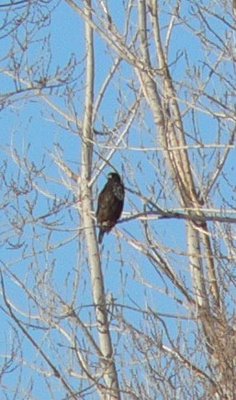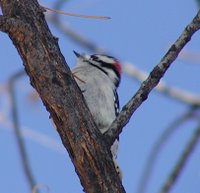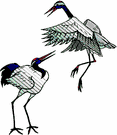Lamar December 29, 2005
Birding in Lamar has been really slow. After our cold snap, we've had warm weather and daily wind. The forecast for the rest of the week is the same--60 degree days with strong winds in the afternoon.
The best birds I've had this week at the feeders are a couple of Yellow-rumped Warblers and a Gray Catbird. The catbird lives next door, or so I think, in the neighbor's bushes which are tangled with Virginia creeper vines. The bird is most often seen taking a daily bath with great vigor. Other birds of note: a small flock of Pine Siskin visited the thistle feeder, which I have not had to refill all fall, winter seaon; two Downy Woodpeckers visited the suet during the cold spell; the little Red-breasted Nuthatches are still coming to the sunflower feeder regularly; and the six Inca Doves visit mostly in the warm weather, not the cold. My birding companion, Dottie, saw the male Red-bellied Woodpecker at Lamar Community College last week. I've noticed many dead trees have fallen in the woods, so use caution if you are birding there on a windy day.
If anything significant appears, I'll be sure and post it.
Janeal Thompson
Lamar, CO
















